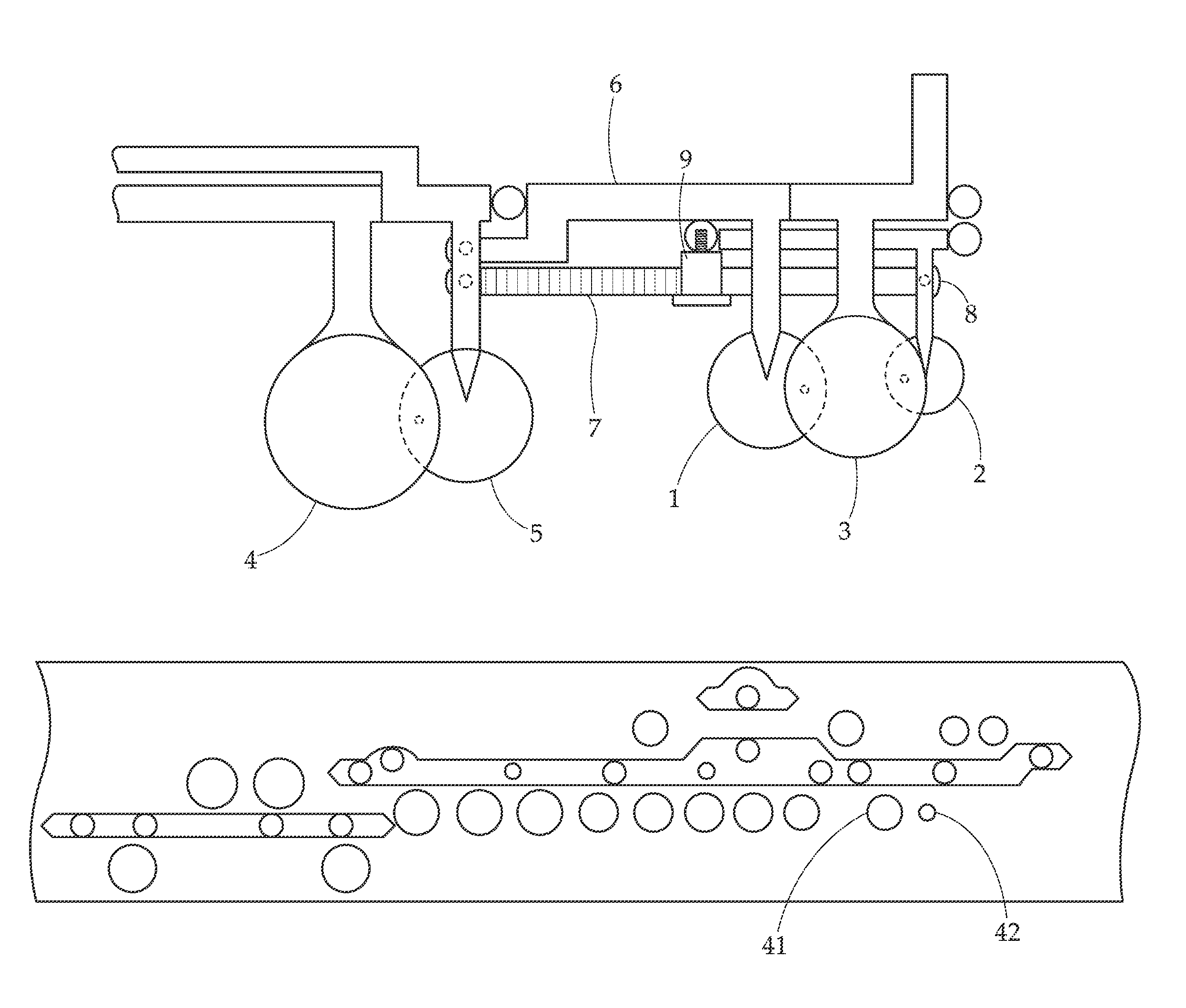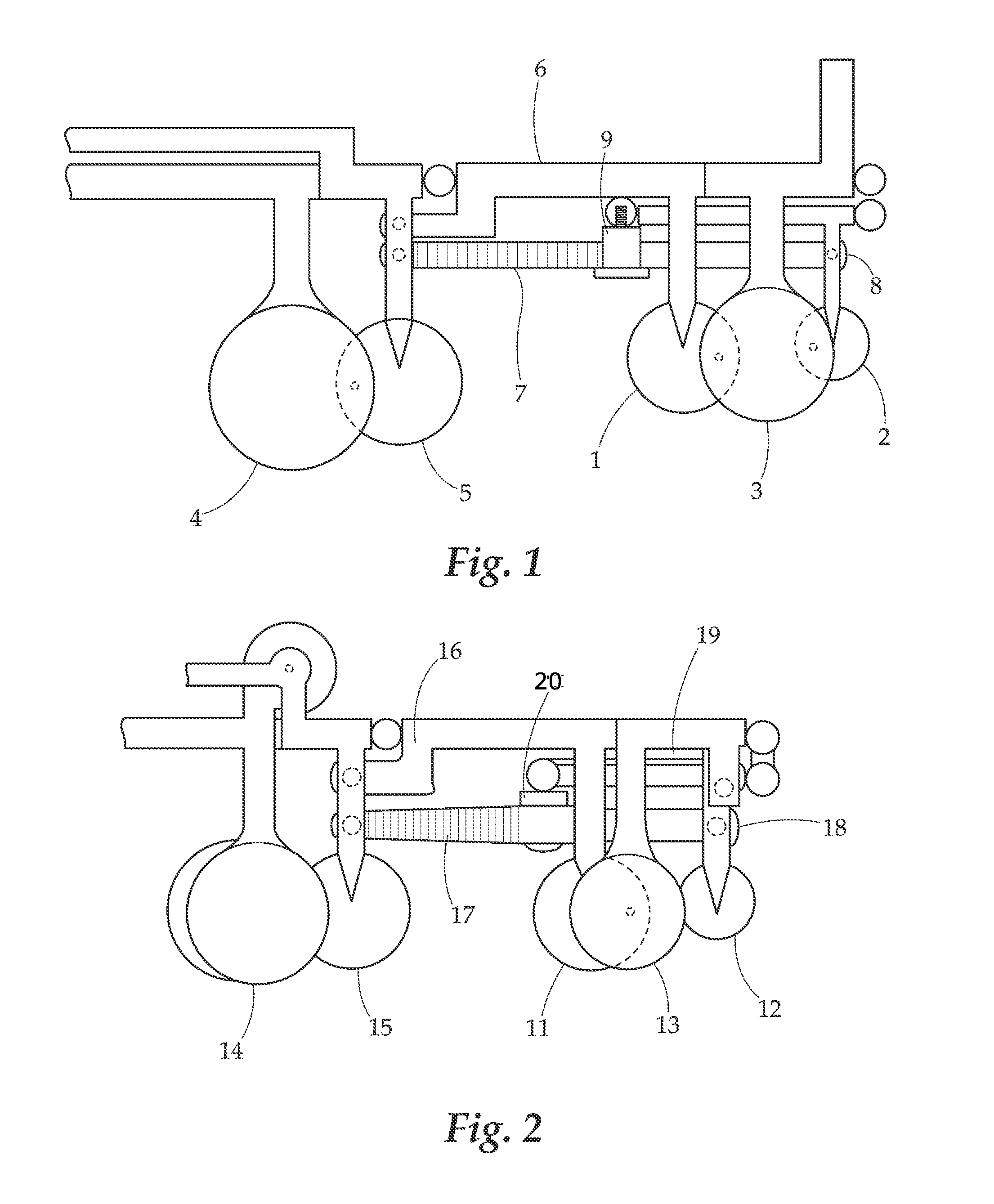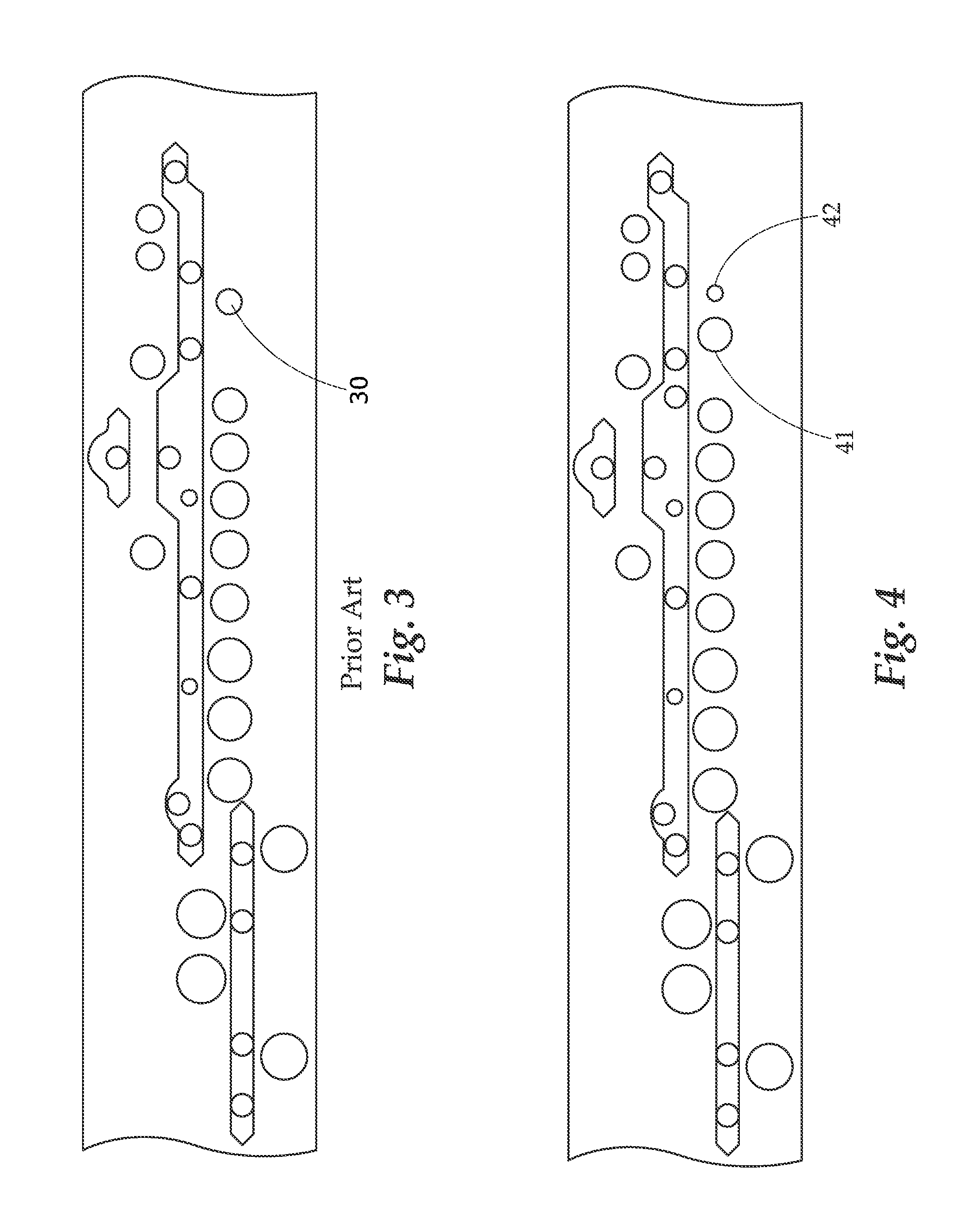C# mechanism for flutes and piccolos
a technology of c# and piccolo, applied in the field of windblown musical instruments, can solve the problems of spring levers that may yield agains
- Summary
- Abstract
- Description
- Claims
- Application Information
AI Technical Summary
Benefits of technology
Problems solved by technology
Method used
Image
Examples
Embodiment Construction
[0021]The detailed description set forth below in connection with the appended drawings is intended as a description of presently preferred embodiments of the invention and does not represent the only forms in which the present invention may be constructed and / or utilized. The description sets forth the functions and the sequence of steps for constructing and operating the invention in connection with the illustrated embodiments.
[0022]In the prior art, the C# tone hole has been called upon to perform several tasks in regulating the pitch of various notes on a flute and piccolo, in that the C# tone hole must operate as both a vent hole as well as a tone hole. The result of this is that none of the notes that make demands on this single C# tone / vent hole is perfectly in tune. This also results in the prior art C# tone / vent hole having a different than optimal size, causing it to not produce an ideal C# note.
[0023]Generally, the present invention concerns a wind-blown flute or piccolo ...
PUM
 Login to View More
Login to View More Abstract
Description
Claims
Application Information
 Login to View More
Login to View More - R&D
- Intellectual Property
- Life Sciences
- Materials
- Tech Scout
- Unparalleled Data Quality
- Higher Quality Content
- 60% Fewer Hallucinations
Browse by: Latest US Patents, China's latest patents, Technical Efficacy Thesaurus, Application Domain, Technology Topic, Popular Technical Reports.
© 2025 PatSnap. All rights reserved.Legal|Privacy policy|Modern Slavery Act Transparency Statement|Sitemap|About US| Contact US: help@patsnap.com



